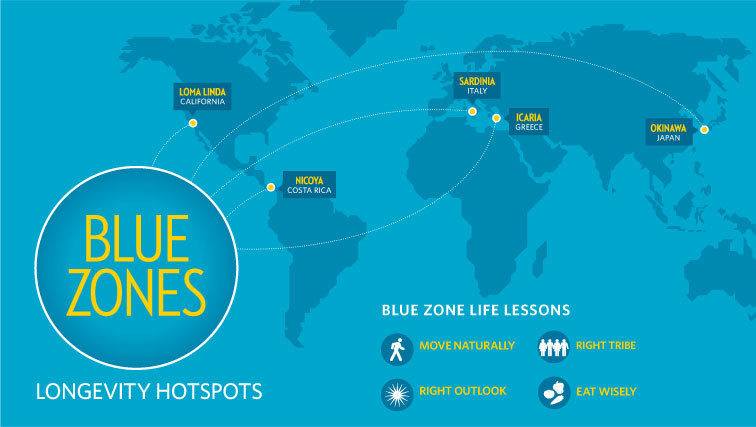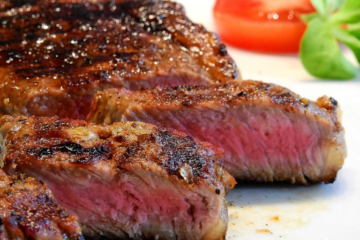Research is mixed regarding dairy foods and cancer risk. Understanding the details is vital in order to make wise choices.
In this post I want to look at what exactly makes the research confusing at first glance, look at the research around colon cancer, gastric cancers, postate and rbeast cancer, as well as try to come up with a workable plan to lower risk overall.
Why the research seems so confusing
There are three main reasons that the nutrition world, and as a spin-off of this, the medical world, has been loathe to come to conclusions about dairy as a cancer risk. They are:
- because dairy research results differ based on what form of dairy was used: low-fat milk, full cream milk, yoghurt, cheese, cream, ice cream and dairy-based calcium supplements
- there are many types of cancers that react in different ways to different milk products, and
- because there are different ages at which people can get cancer, and this also makes a difference to the cancer drivers.
As a result of this, when studies are mashed together in meta-analyses, the CONSENSUS for dairy and cancer research ends up being “we just don’t know – some studies show it’s OK to drink milk, some say it’s a bad thing”.
So nothing much is ever done as regards a unified stance on dairy and cancer.
This lack of clarity produces only useless information for the public and is of little help for medical professionals who are then unable to give patients reliable advice regarding dairy consumption.
Yet dairy makes a difference in driving various cancers, so it is up to us all to learn the details and make a plan regarding dairy.
In this post, I wish to tease out some of the findings regarding cancer types, dairy forms and ages and suggest an approach to dairy that appears to lower our risk of cancer, according to current research.
Colorectal cancer / colon cancer
A 2017 study concluded that dairy appears to be beneficial for colorectal cancers. A meta-analysis looked at nineteen cohort studies. The studies were divided into the following groupings:
- Groups with 400g/day of mixed dairy products, maybe a cup of milk and some cheese, icecream or yoghurt each day
- Another group had around 200g milk only daily. That’s maybe just a daily latte or several cups of milky tea, or a small bowl of cereal with milk
- Another group had about 50g cheese only daily. They didn’t drink cow’s milk.
Which group had the reduced risk of colorectal cancers?
- The group who had the MOST dairy? or
- the group who had the least? or
- the cheese only group?
The group which drank more cow’s milk and enjoyed other dairy products had the lowest cancer risk (Group 1). Their groups ended up with fewer malignant polyps. The cheese only (Group 3) were the worst off.
The researchers were at pains to point out that these findings were restricted to colon cancer ONLY. In other words, all the other types of cancer did not respond in this way to larger amounts of dairy.
Because colon cancer studies arrived at a completely different result to all other cancers regarding dairy consumption, much more study has since been done. It now appears that the high calcium in cow’s milk may actually be binding up pro-inflammatory bile acids in the gut, which protects from colon cancer. Cheese-eating increases bile acids, leading to higher rates of colon cancer.
The Calcium in Dairy Questions
As we will see, calcium in dairy is not good for other cancers, so why not consider getting our calcium from plant foods? This is not a source that has been heavily marketed for calcium. The dairy industry has seen to that. People quitting dairy worry about calcium sources, not pausing to think that 80% of the world is lactose intolerant and does not consume any dairy, and they have not been collapsing of hip fractures over the centuries.
Calcium from supplements is also associated with cardio-vascular problems, so sticking to plant foods, especially green leafy vegetables and legumes, is even better again as the main calcium source.
Where to get non-dairy calcium
You may be wondering how you can get enough calcium without consuming dairy foods or taking large amounts of calcium supplements. Keep in mind that most of the lactose intolerant world has achieved this aim for centuries. It is only the marketing directed at Westerners which has convinced most people that it is impossible without daily dairy foods.
This chart shows how to aim for the recommended daily intake of 800-100mg/calcium daily (more for pregnancy and lactation). Keep in mind that if you are eating less protein, as you will be by eating more plants, you will not be losing so much calcium in urine, so your needs will be not as high as milk drinkers. The daily RDI was made for milk drinkers, taking high protein consumption into account. Many tribal peoples around the world take in much less calcium than this daily with no adverse effects for bone strength.

Gastric cancers/stomach cancer
A 2014 meta-analysis pooling data from 26 studies of 7272 gastric cancer cases and 223,355 controls showed no significant association between dairy intake and gastric cancer.
But a 2015 meta-analysis of 17 case-control studies and 6 cohort studies showed differing results: the results of cohort studies indicated that increased consumption of total dairy food was associated with a reduced risk of gastric cancer, whereas case-control studies provided no association. The researchers concluded that dairy has no association with gastric cancer risk. In other words, milk-drinking did not make gastric cancer more likely, but neither was it much help in stopping its development.
Further studies have come to similar conclusions.
Now I wish to turn to two of the most common cancers which touch Australians: prostate cancer and breast cancer.
Prostate Cancer and Dairy
Many studies have implicated dairy foods with prostate cancer over recent years. It is the cancer with the strongest association to cow’s milk. In one 2015 systematic review of 32 studies, researchers teased out the differences between drinking milk, eating cheese and total calcium intake from all foods.
What they discovered was that risk increased up to one cup of milk drunk daily, after which risk plateaued. So milk-drinking increased prostate cancer risk – but after one cupful, other factors took precedence. Whole milk came out just a little better than low-fat or skim milk, perhaps because calcium is higher in the latter two.
In the reviews of total calcium intakes, risk of prostate cancer increased significantly over 1200mg/day, and over 2000mg/day, it skyrocketed.
However, it soon became clear that NON-DAIRY CALCIUM, such as calcium obtained from plant foods, produced no risk at all for prostate cancer development – it was only the calcium obtained from dairy foods that caused problems.
You may want to know what stage of cancer is associated with calcium intakes, and that is something the researchers looked at particularly. High dairy calcium intakes made no difference to the number of localised low-grade prostate cancer incidences. They are prostate cancers that are slow-growing and men are most likely to die with, but not from. In the West they are almost normal, they are so common.
But high calcium from dairy was strongly associated with the development of advanced and fatal prostate cancer. Typical in this group was an intake of 1500mg/day of calcium from dairy foods PLUS low Vitamin D. (Vitamin D and calcium work synergistically in the body, one affecting the absorption and activity of the other.) High dairy calcium appeared to lower cell differentiation, a pattern of advancing cancer.
What is this ‘cell differentiation?
When cells reproduce, they make cells with special functions, like themselves. Each cell is different to other types of cells. When cancerous cells reproduce, the differences in the cells begin to disappear. This results in increasing numbers of ‘same’ cells that don’t function properly but take up space. In time you see organs with sections that do not function as they ought. This is, simply put, how cancer kills. Cells become “undifferentiated” and non-functional, until organs fail OR the non-functioning cells (which group as tumours), press against important body organs causing their damage and failure.
What researchers found was the more cow’s dairy, the faster these cancer cells became undifferentiated – meaning cancers advanced faster and faster. This is of huge concern. Prostate cancer is usually slow-growing cancer, but dairy foods tended to turn it into a faster developing cancer.
What men can do for themselves?
I suggest working out exactly how much calcium from dairy foods you are taking in on average each day. You can use the free app, ‘Cronometer’, or other such apps. The research shows it is best to be keeping calcium from dairy below 1200mg/day – the lower the better.
Don’t forget that drinking any milk increases risk, up to 1 cupful.
Once you know your calcium intake from dairy, you can make a plan to stay under these levels.
Breast cancer
There are hundreds of reliable studies on breast cancer and cow milk. As with other cancers, age, type of dairy food and dairy amounts consumed all make a difference.
A meta-analysis of eighteen studies totalling 1,063,471 women indeed showed different risks. For older to younger women, for full fat to low-fat dairy, for different dairy foods.
Dairy was more strongly associated with breast cancer in pre-menopausal women, but not in post-menopausal. In other words, it was more important for younger women to limit their dairy foods.
Low-fat dairy was more strongly associated with breast cancer than was full cream dairy. Suggestions were made that the higher protein in low-fat dairy may be the culprit. This seems more probable than the suggestion that it could also be higher calcium in low-fat dairy, for reasons you can read below.
Increased total dairy consumption was associated with reduced breast cancer risk – but not increased MILK consumption. In other words, drinking more MILK was of no use in reducing breast cancer risk, but consuming more ‘other dairy’ seemed to have a little benefit.
A suggested reason why this ‘other dairy’ may be beneficial is that this ‘other dairy’ includes mostly yoghurt and cheese. Both of these foods contain naturally occurring probiotics. Clinical trials show that some probiotic strains inhibit tumour growth and migration in malignant tumour cells. Further, probiotic bacteria also help metabolise other compounds like isoflavones, flavonoids and polyphenols which each have protective effects.
Therefore, this study shows that for women to consume dairy safely, consume full-fat fermented products like cheese or yoghurt post-menopause.
Confused? Don’t be.
Hit Pause – Check the ‘Blue Zones’
Fortunately, we don’t just have short term studies to look to for advice on dairy consumption. We also have long population studies. We can look at the Blue Zones. Those are the parts of the world where most people tend to live to old ages (often past 100) with few chronic diseases. Before the advent of Macdonalds in these places, many studies were done.
Several Blue Zones included dairy in their regular meals. But only a specific type of dairy: fermented dairy. Those particular Mediterranean areas included cheese and yoghurt – as condiments. These century-old eating patterns do not appear to increase breast cancer risk.
Other Blue Zones included no dairy at all, such as in Japan and Central America.
We know that consuming soy milk actually REDUCES breast cancer risk. Therefore, it makes sense to me to swap cow’s milk for soy, keeping cheese or yoghurt for condiments if desired.
What about casein?
Casein is one of the proteins of cow’s milk dairy, the other being whey. In order for several common cancers to grow, a growth-promoting enzyme signal called TOR has to be upregulated in the person’s genes. Sort of ‘switched on’ to activate it. An amino acid, leucine, high in casein, is one amino acid that signals TOR to ‘switch up’. Leucine, and protein overall, is three times higher in cow’s milk than in human milk. This is a major reason that a calf grows much faster than a human baby.
Leucine is one of the branched-chain amino acids which bodybuilders love. It indeed causes faster muscle growth and muscle repair. You can read <here> how leucine stimulates the TOR enzyme to promote muscle growth and the link of this identical process to cancer proliferation. Read it before following the advice of your gym buddies.
The cancer industry is well aware of this TOR-cancer link. As a result, several commonly used chemotherapy drugs belong to a class called ‘mTOR inhibitors’. These drugs work by inhibiting or limiting the muscle stimulating (and cancer stimulating) work of the TOR enzyme. Would it not make more sense to limit the amount of stimulation TOR gets in the first place? Limiting the amino acid that signals it to work can achieve this end. Which amino acid? The amino acid, leucine, which is so high in dairy foods.
Why might this information be so little known?
It’s difficult to get this sort of information in the popular media. One reason could be that there is a lot of money at stake. Medical and dietetic associations and research committees often include a representative from a dairy corporation.
The best information we can often get is “Eat low-fat dairy and reduce intake”, which, as these studies show, are of little help when it comes to prostate cancer.
Another reason many do not know this is that people in Western countries just love dairy foods. Cheese is the last thing most people want to do without, largely due to its addictive opioid qualities – it acts on the same area of the brain as opioids, stimulating the dopamine response. Cheese is also a cultural icon, each part of the Western world having its own variety.
One approach to this information
Cancer, being an inflammatory diseases, is subject to a whole range of factors, only ONE of which is specific dietary items. If a person had all the other factors right, they may be fine having a bit more dairy.
My suggestion is to work on all the other factors of a healthy life. You can read my blog post on this topic <here> and get a free fridge poster on that page – then when you want to have a little dairy at a celebration or as a condiment, your risk will likely be negligible.
Also, check your non-plant calcium intake on Cronometer for a day or two.
Next, maximise Vitamin D (which enhances calcium absorption) – with sunshine or supplementation as needed.
Lastly, but perhaps most importantly given all the research, use dairy products as condiments only, and less if you are at higher risk of cancer, given your age or sex. The best cure for cancer is prevention, and you can do a lot to lower your own risk.





0 Comments